Introduction
Autism spectrum disorder (ASD) is a complex developmental condition that requires early and accurate diagnosis to ensure that children receive the right interventions and support. Testing for autism is crucial not only for identifying the condition at an early stage but also for tailoring interventions that can significantly enhance a child's communication, social skills, and behavioral management. Early diagnosis and intervention have been proven to yield better outcomes, making it imperative for families to seek evaluations promptly.
Despite the recognized benefits, many families face long wait times for autism evaluations, delaying access to critical early interventions. Organizations such as The Autism Community in Action (TACA) and the Interagency Autism Coordinating Committee (IACC) are working tirelessly to bridge these gaps, providing resources and advocating for timely screenings. By understanding the importance of early diagnosis and leveraging available resources, parents can ensure their children receive the necessary support to thrive.
Why Get Tested for Autism?
Assessing for this condition is essential for early detection and assistance. An early diagnosis can dramatically influence a young person's developmental path, leading to customized support that nurtures growth in communication, social skills, and behavioral management. Evidence indicates that early childhood programs significantly improve social communication in interactions with caregivers and tackle core challenges related to autism. For instance, naturalistic developmental behavioral approaches, such as the Early Start Denver Model and JASPER, are effective in promoting skill gain in young autistic children, particularly in social communication.
The importance of timely diagnosis cannot be overstated. Research consistently demonstrates that the earlier measures such as behavioral therapy start, the better the results. Despite this, families often face long wait times for evaluations, with many specialty centers reporting delays of over four months. These delays can result in missed opportunities for early intervention during critical neurodevelopmental periods.
Organizations like The Autism Community in Action (TACA) and the Interagency Autism Coordinating Committee (IACC) are working to address these gaps. TACA, for instance, supports thousands of families monthly, emphasizing the need for early and effective treatment. Meanwhile, the IACC concentrates on enhancing coordination and communication in research and services related to developmental disorders, advocating for early screening and diagnosis through various studies.
By accessing complimentary autism assessments, parents can avoid the significant delays frequently linked to diagnostic procedures. These evaluations provide crucial insights into a young person's strengths and challenges, paving the way for tailored interventions that significantly enhance their quality of life. Empowering parents with the right resources and therapies is fundamental in ensuring youngsters receive the support they need to thrive.
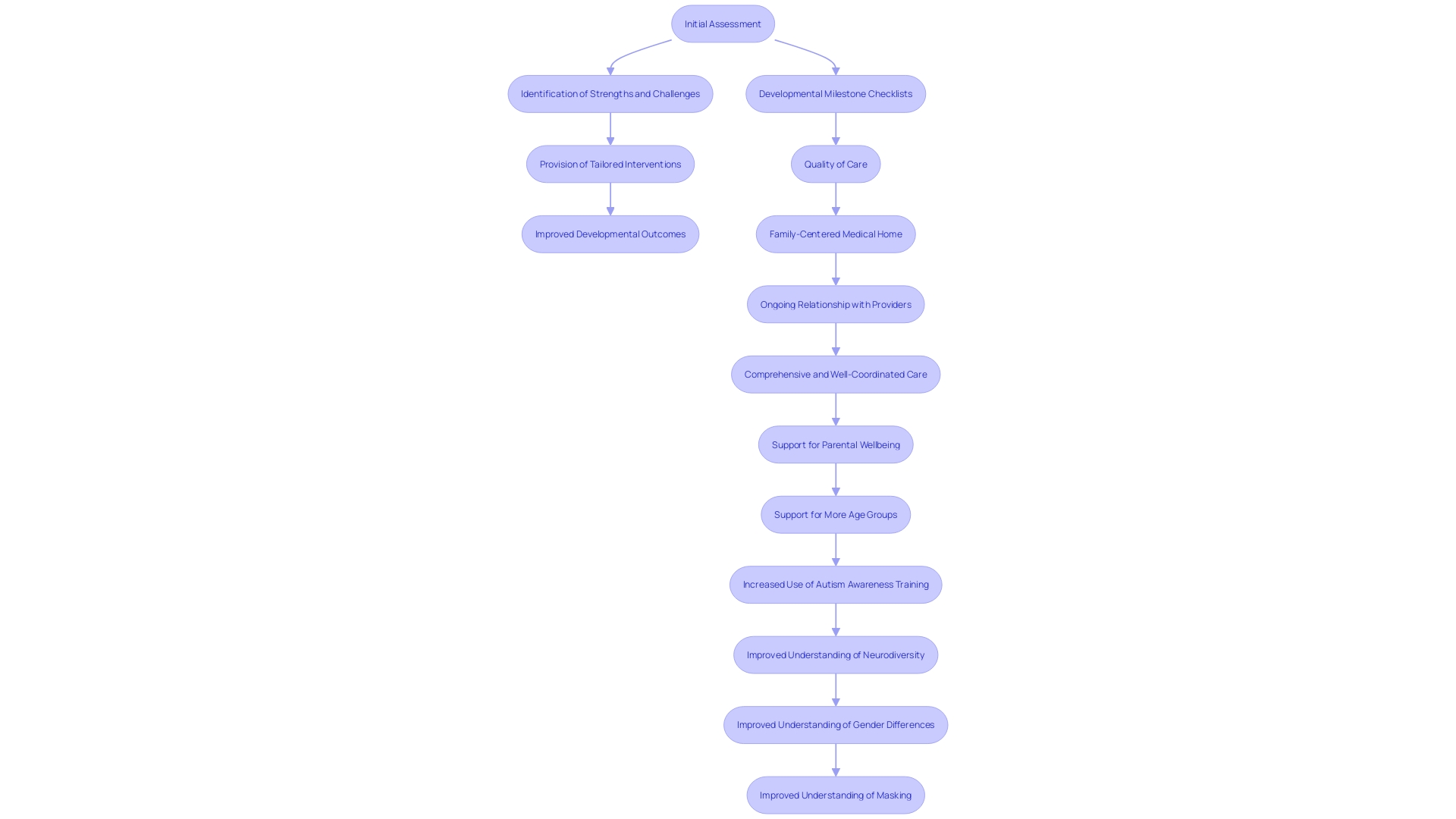
Who Can Diagnose Autism?
Qualified experts such as pediatric doctors, psychologists for youth, psychiatrists, and neurologists play a crucial role in diagnosing autism spectrum disorder (ASD). These specialists utilize their extensive training and expertise to conduct in-depth evaluations, ensuring a thorough and accurate diagnosis. The diagnostic process typically involves a combination of standardized criteria from the Diagnostic and Statistical Manual of Mental Disorders, Fifth Edition (DSM-5), and detailed observations of the individual's behavior. This comprehensive approach allows for a nuanced understanding of the young individual's developmental, behavioral, and communication skills, paving the way for tailored interventions and support services. Such diagnostic assessments are crucial, as they not only assist in recognizing the specific requirements of the young one but also provide substantial advantages, including enhanced self-awareness and self-acceptance for autistic individuals.
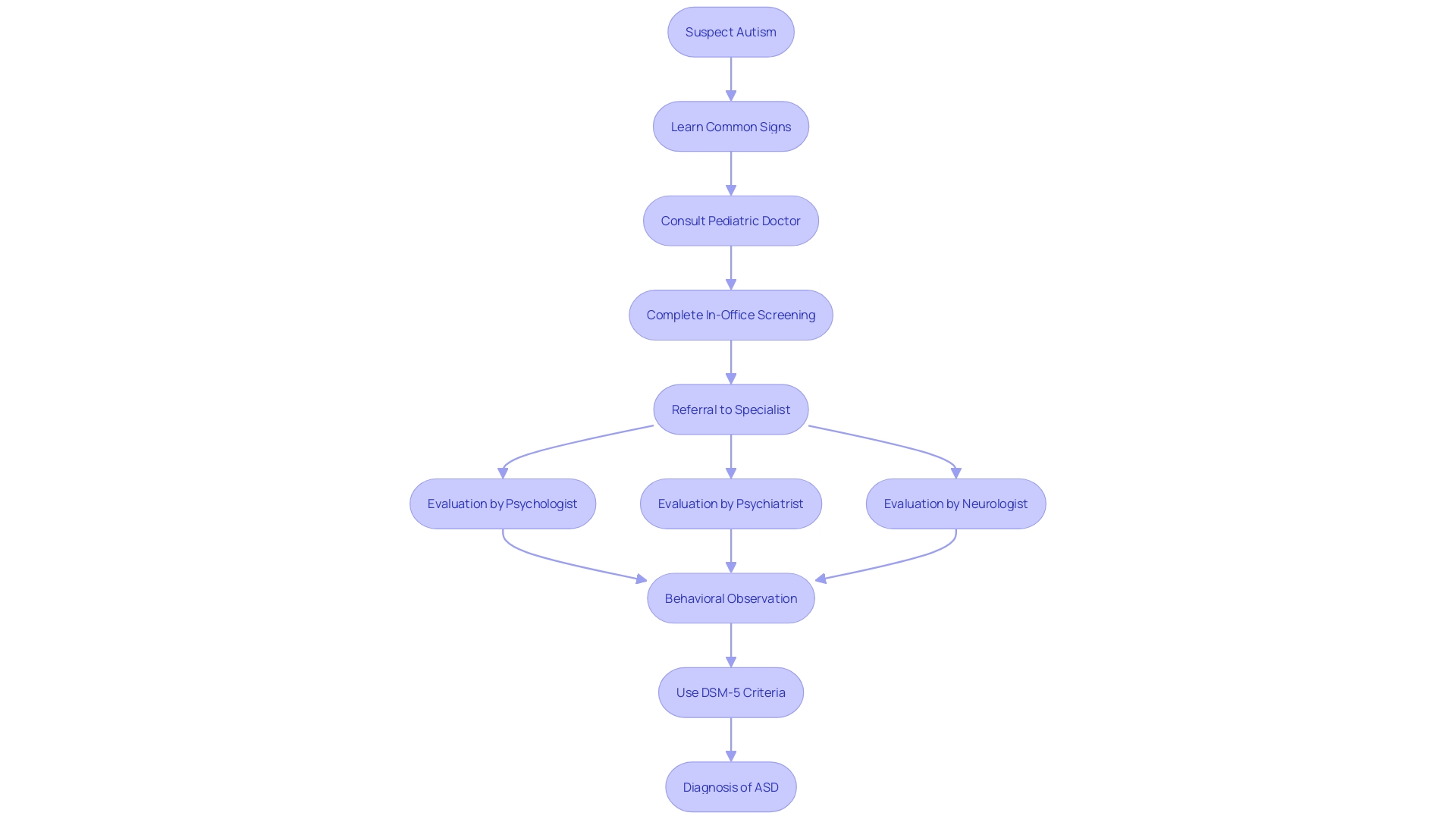
Where to Get Tested for Autism
Arranging an evaluation for your child is a vital step in comprehending their unique needs and acquiring the appropriate support. Start by exploring local clinics, hospitals, or specialized centers focusing on developmental disorders. Communities often have resources through educational institutions, mental health facilities, or organizations that can connect you with reputable testing services.
One example is the Autism Community in Action (TACA), which provides comprehensive information on medical research, treatment options, and therapies. Furthermore, the Interagency Autism Coordinating Committee (IACC) strives to improve coordination and communication among federal agencies and partners with the community to enhance services and research.
A study by Scott Badesch, former President of the Autism Society of America, highlights the challenges families face, such as long wait times for evaluations and reimbursement barriers. On average, young individuals wait three years from the initial concern to an autism assessment. These delays hinder access to early support, which is essential during vital neurodevelopmental phases.
Programs like the Adult Autism Health Resources initiative at Harvard Medical School also emphasize the importance of ongoing care for autistic individuals. As noted by Christopher McDougle, director of the Lurie Center for Autism, many autistic individuals lose access to services after high school, necessitating initiatives to ensure continuous quality medical care.
Seek out local resources tailored to your needs, whether through specialized school programs or community-based services. These efforts can provide invaluable insights and pave the way for effective interventions and support.
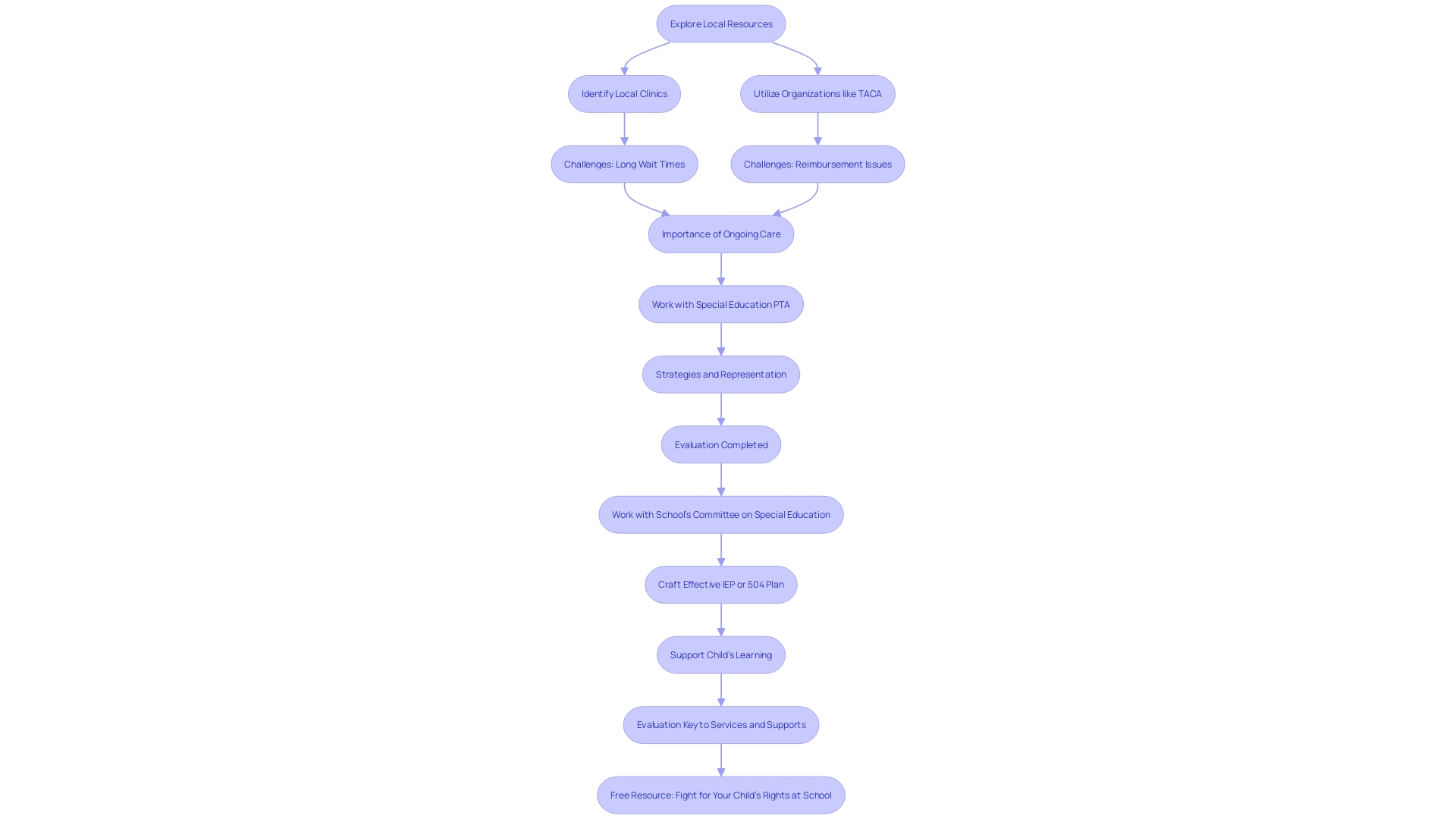
Steps in the Autism Assessment Process
The autism evaluation process often begins with a detailed review of the individual's developmental history, followed by a series of standardized assessments and observational studies. This comprehensive approach includes interviews with parents and teachers to gather insights into the student's behavior across various settings. Standard diagnostic tools such as the American Psychiatric Association's DSM-5 criteria are employed to ensure a thorough analysis. Experts may utilize behavioral checklists and direct engagement with the youth to assess communication, social skills, and other developmental areas. In certain cases, primary care providers may direct the family to specialists such as neurodevelopmental pediatricians or neurologists for additional evaluation. This multi-faceted approach helps in accurately identifying the condition and crafting appropriate intervention plans.
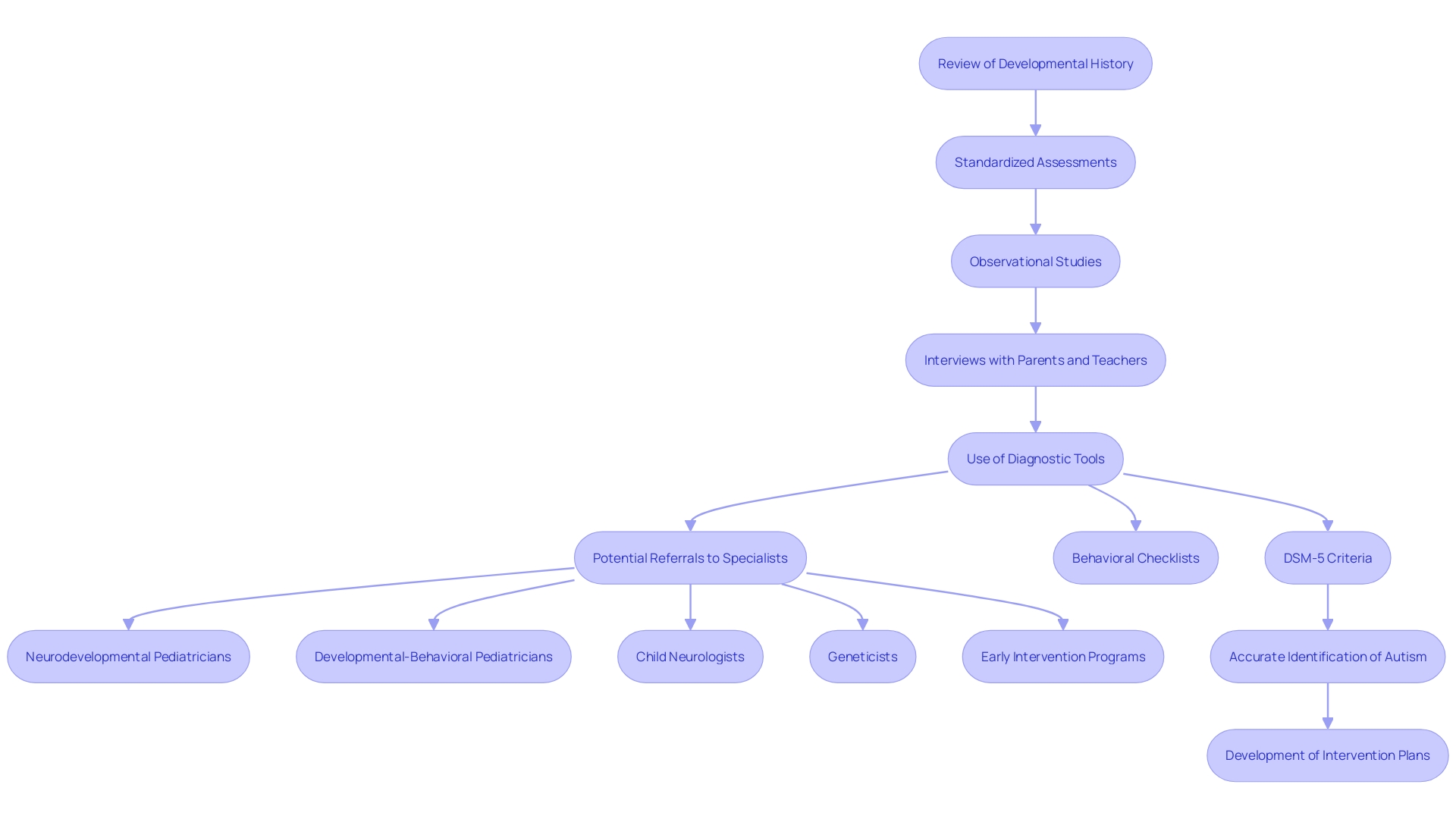
Preparing for an Autism Evaluation
Getting ready for an autism assessment can greatly lessen stress for both the young one and the parents. Begin by collecting important documents such as your offspring’s medical history, developmental milestones, and comprehensive behavioral observations. These records are crucial as they provide vital information that professionals rely on, alongside their own observations, to make an accurate diagnosis. Talking about the forthcoming assessment with your offspring can also be advantageous. Explain the process in a way that is understandable for them, which helps set expectations and ease any potential fears they might have. This preparation not only aids in making the assessment smoother but also ensures that all pertinent aspects of your offspring’s development are taken into account, paving the way for more customized and effective interventions.
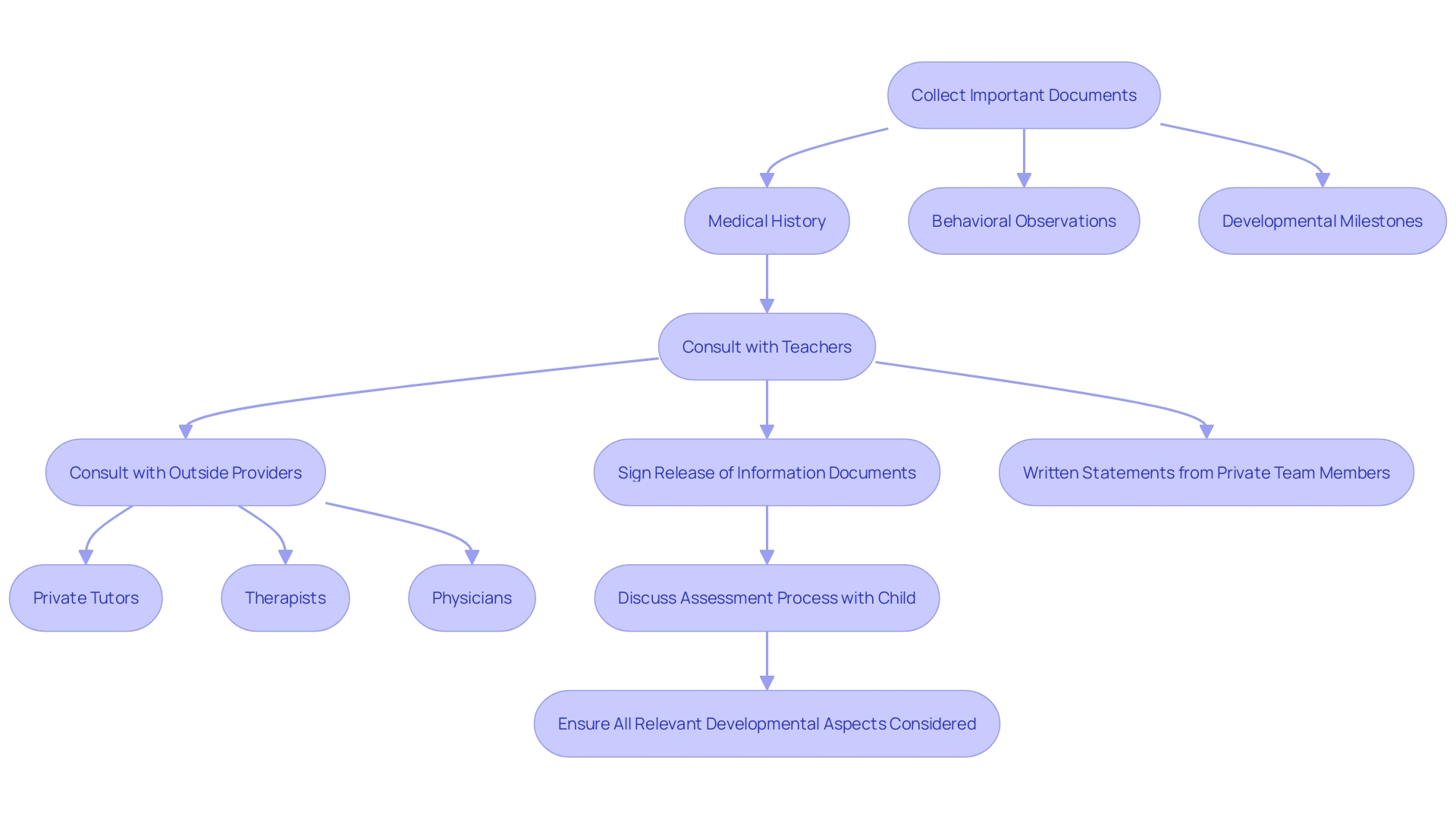
What to Expect During the Evaluation
During the evaluation process, expect a blend of interviews, questionnaires, and interactive activities tailored to your offspring's needs. The expert will closely observe your young one's behavior across different settings to gain a comprehensive understanding of their social skills, communication abilities, and any repetitive behaviors. This comprehensive method is intended to create a detailed representation of your special individual's unique profile, enabling a more precise diagnosis and efficient planning of assistance.
Evidence indicates that developmental programs can significantly enhance social communication in interactions with caregivers and tackle core challenges related to autism, such as difficulties with social communication. This comprehensive and cooperative approach guarantees that the review is not merely an appraisal but a move towards enabling families and aiding the young one's growth.
Research indicates that high-quality early assistance can decrease intellectual impairment and improve social communication and language abilities. By engaging in such assessments, families can obtain essential resources and support networks, customized specifically to meet the requirements of young individuals with developmental disorders.
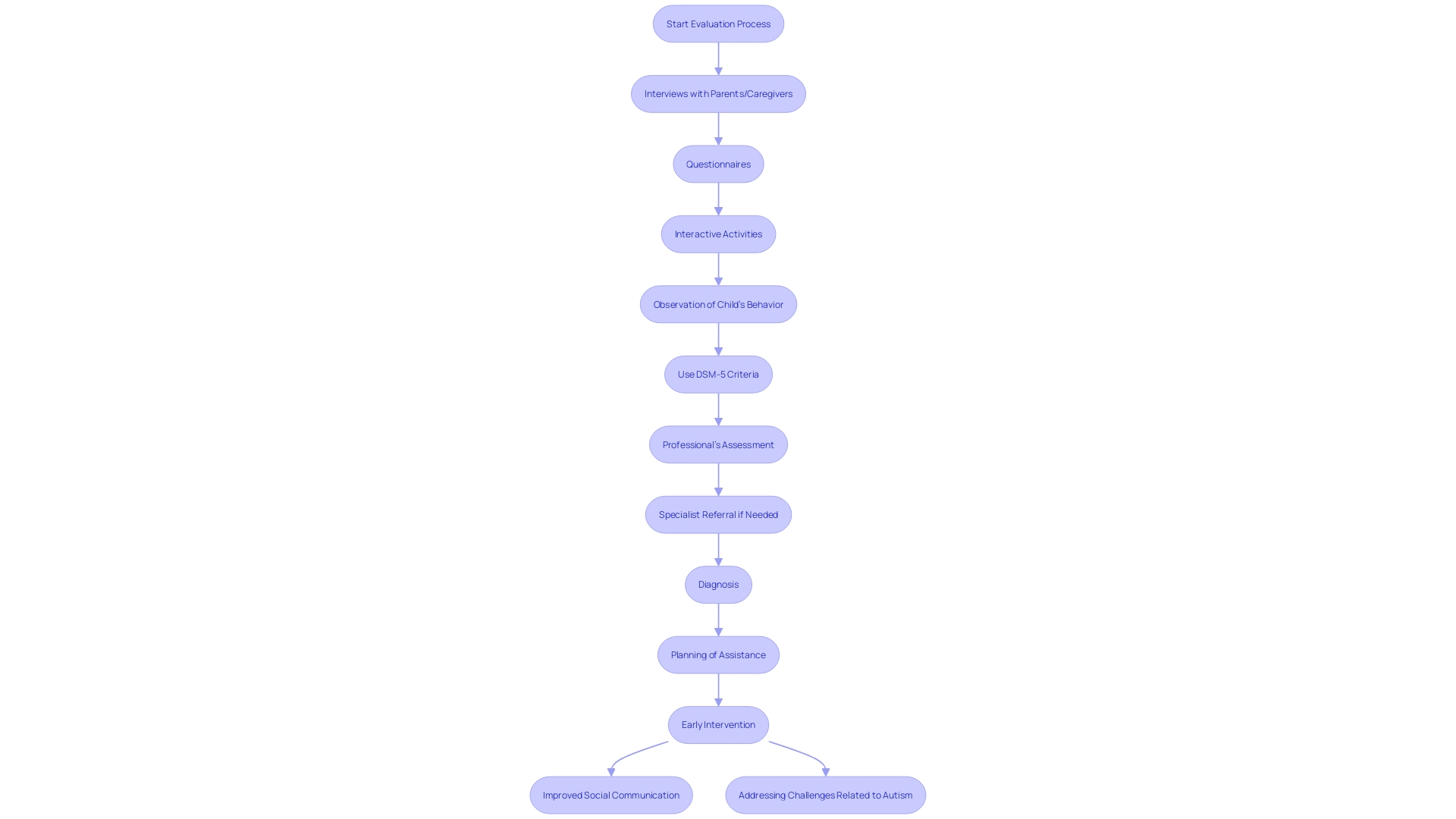
After the Diagnosis: Next Steps
After receiving a diagnosis, it's essential to discuss next steps with the health care provider. This may involve developing a personalized support strategy designed for your offspring's distinct requirements. Evidence indicates that early developmental actions can significantly enhance social communication and other fundamental challenges related to autism. Participating in early, suitable, and family-supporting actions can greatly benefit your offspring.
Accessing educational resources is another crucial step. Organizations like The Autism Community in Action (TACA) provide valuable information on medical research, treatment options, therapies, and nutrition. Always consult your child's doctor to determine the most suitable resources and interventions for your child.
Connecting with support groups can provide emotional and practical support. The Interagency Autism Coordinating Committee (IACC) strives to enhance collaboration and dialogue throughout the federal government and collaborates with the community affected by developmental disorders, including parents, advocates, and providers. This collaboration aims to enhance the support system for families navigating autism.
Comprehending the diagnosis is the initial step in advocating for your offspring's needs and ensuring they receive suitable assistance. By tapping into these resources and networks, you can better navigate the challenges and opportunities ahead, ensuring your offspring has access to the best possible care and interventions.
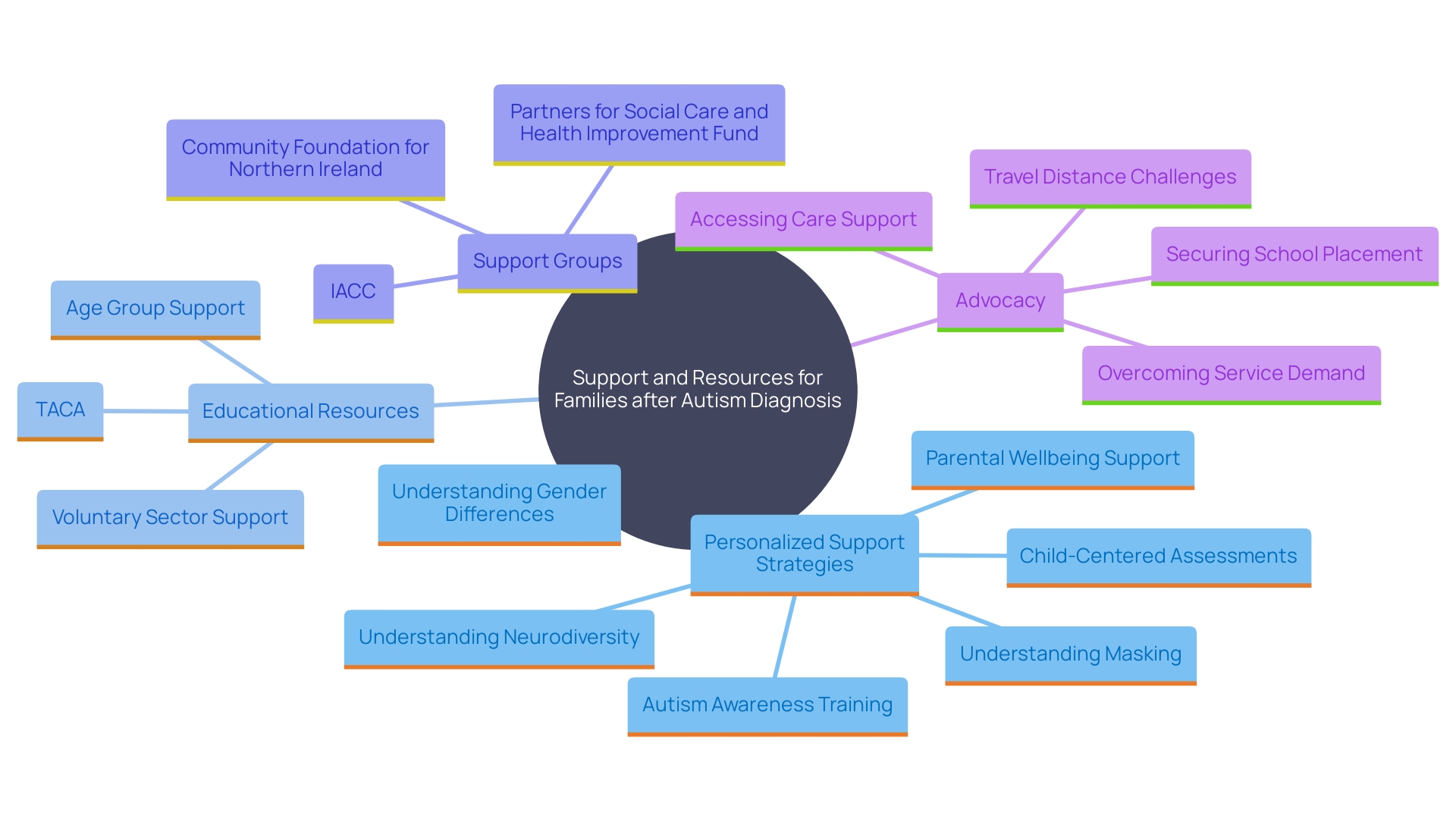
Choosing the Right Healthcare Provider
Selecting the appropriate healthcare professional for your child's developmental assessment is essential. It's essential to research their qualifications, experience with developmental assessments, and their approach to treatment. The American Psychiatric Association's Diagnostic and Statistical Manual, Fifth Edition (DSM-5), is the standardized criteria often used for diagnosing this condition, and professional observations combined with caregiver descriptions are key in this process. Given the significant wait times reported—often over four months, with some centers having waitlists extending beyond a year—it becomes even more important to seek referrals from trusted sources and consider multiple providers to find one that aligns with your family's values and needs. The prolonged waits in diagnosis, averaging three years from the initial issue to evaluation, emphasize the importance of proactive and informed decision-making to guarantee prompt and effective support for your offspring.
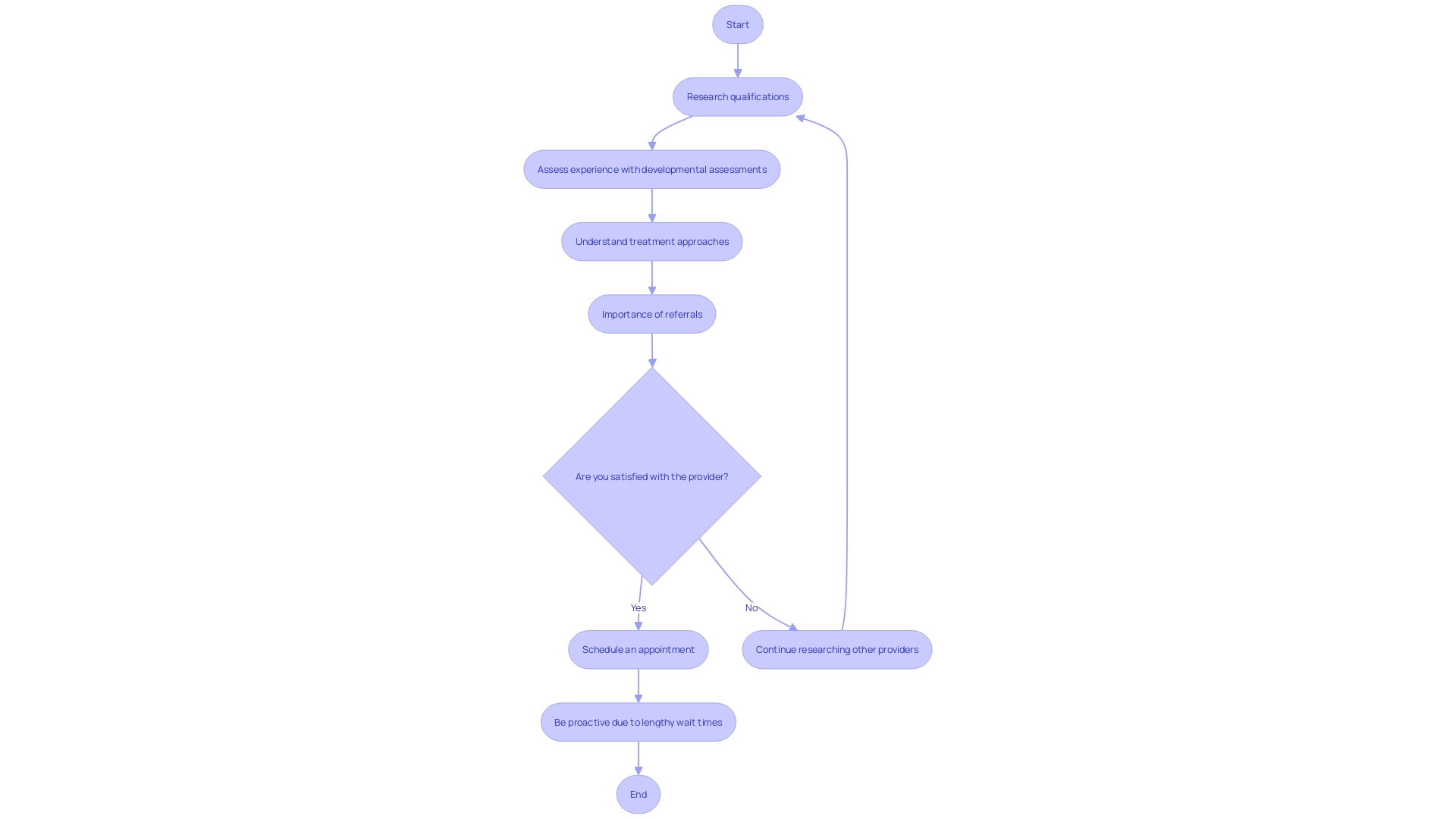
Benefits of Virtual Assessments
Virtual assessments have emerged as a vital solution, offering much-needed flexibility and accessibility for families. In a setting where access to support services for individuals on the spectrum is often disjointed and difficult, online assessments offer a convenient option, particularly for those encountering obstacles like transportation difficulties or extended waiting periods. By utilizing telehealth, families can receive comprehensive assessments from qualified professionals without leaving their homes.
Statistics show that delays in diagnosis—sometimes extending to three years—result in young individuals missing out on early intervention, which is vital during the essential early neurodevelopmental phase. Virtual assessments can expedite this process, reducing wait times and allowing for quicker access to necessary support.
A study by Scott Badesch, former President of the Autism Society of America, highlights significant issues within the healthcare community, such as long waitlists and reimbursement barriers that disproportionately affect disadvantaged families. Approximately two-thirds of specialty care centers have wait times of over four months for an autism evaluation, with 21% having waitlists exceeding a year.
The Interagency Autism Coordinating Committee's 2022 Summary of Advances in Autism Research emphasizes the potential of telehealth to improve early screening and diagnosis. By leveraging digital support, families can navigate service delivery systems more efficiently, overcoming common barriers and accessing the services their children need.
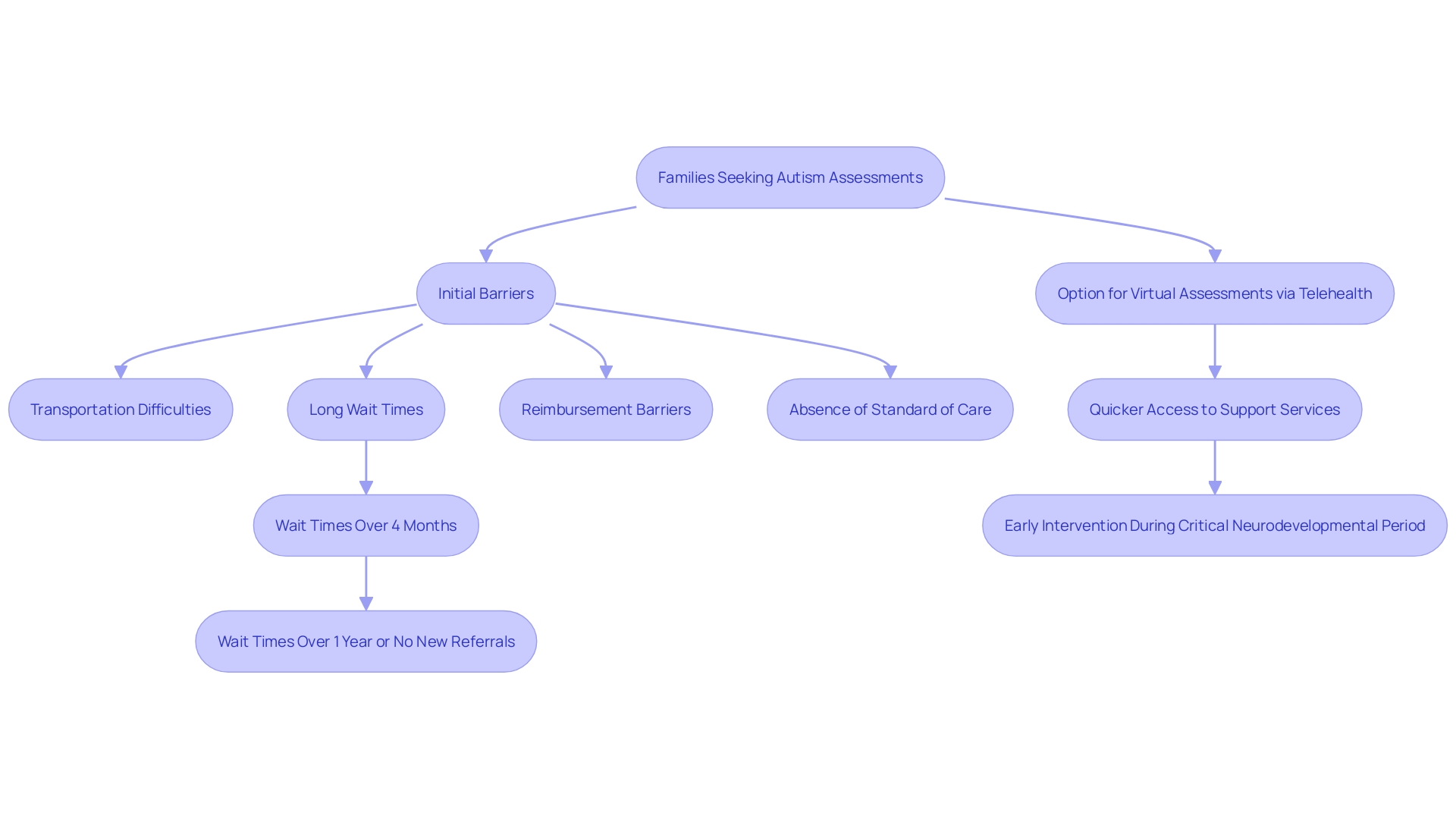
Conclusion
Early and accurate testing for autism spectrum disorder (ASD) is paramount in securing the best possible outcomes for children. By understanding the significance of early diagnosis, families can initiate timely interventions that foster improvements in communication, social interaction, and behavioral management. The evidence clearly supports the notion that early interventions, particularly during critical developmental stages, can lead to substantial advancements in a child's developmental trajectory.
Despite the challenges posed by long wait times and access barriers, resources such as The Autism Community in Action (TACA) and the Interagency Autism Coordinating Committee (IACC) are dedicated to improving the landscape for families navigating the diagnostic process. By actively seeking evaluations and utilizing available services, parents can ensure that their children receive the tailored support necessary to thrive.
Choosing the right healthcare provider and utilizing innovative solutions like virtual assessments can further streamline the evaluation process. These strategies not only enhance accessibility but also empower families to make informed decisions regarding their child's care. Ultimately, a proactive approach in seeking evaluations and interventions can significantly influence a child's development, paving the way for a brighter and more fulfilling future.




